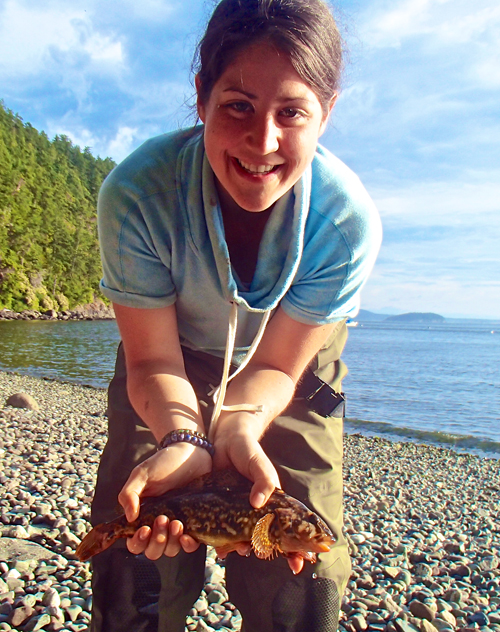
National Geographic specials on TV helped widen her world as she grew up. Now U of G student Justine Ammendolia is broadening her world for real as a National Geographic Young Explorer.
Armed with $7,500 in research grants from the National Geographic Society in Washington, D.C., and the Explorers Club in New York, she will spend a month this summer in southern Greenland.
Ammendolia is one of about 30 students worldwide to receive an Explorers Club youth activity grant out of almost 450 undergraduates and high school students who applied to the program this year. Her National Geographic award was among the highest amounts given by the society to some 20 students this year.
When she learned about her awards by email, she says, “I jumped up and screamed. This was definitely the biggest highlight of my undergraduate degree.”
Ammendolia will study the foraging patterns of seabirds called little auks. Little is known about these birds, dubbed “pygmy penguins” for their minute size and their resemblance to southern pole inhabitants. They nest in colonies numbering in the thousands, tucked into cliff-face crevices on the southeastern shore of Greenland.
Biologists want to gain basic information about their habits, including what they eat and where they forage. Beyond that, tracking changes in where the birds find food and how far they go for it might also tell scientists about the effects of climate change in the north, says Ammendolia, who this year completed a B.Sc. in zoology with a minor in geosciences.
She will attach electronic trackers to the birds to help pinpoint specific feeding locations, distances travelled and how much time the auks spend in various places.
Besides helping to conserve seabirds, experts might use that information to help assess potential effects of more shipping traffic in northern waters, says integrative biology professor Shoshanah Jacobs.
Referring to the student’s project, Jacobs says Ammendolia will “use little auks as indicators of climate change. Seabirds are good ‘equipment’ to use. They sample large regions of the ocean and come back to the colony with the data.”
Jacobs studied another auk species called a murre for her PhD, working on several Canadian Arctic islands. She was approached by Ammendolia during a campus lecture last fall by underwater photographer and explorer Jill Heinerth.
“I wanted to take on a project outside of the classroom,” says Ammendolia. She asked Jacobs for help in fleshing out an idea for a northern expedition. Before joining U of G as a research associate in 2012, Jacobs served as an expedition guide for seven years in both the Arctic and the Antarctic.
Jacobs is also co-supervising research on adventure cruising near both poles by Brittany Manley, who is working on a master’s degree in tourism management
From July 9 to Aug. 13, Ammendolia will live at a field research station called Kap Heogh, located among numerous fjords studding Greenland’s southeastern coast. She will share a hunting cabin with three other student researchers from France.
In addition to the research grants, she has also received a U of G travel grant as well as equipment and supplies from several sponsoring companies. She plans to blog about her research in Greenland at http://westiswestandeastiseast.wordpress.com/home/.
After her fieldwork, Ammendolia will take a holiday in Iceland and then return to Canada. She will begin graduate studies at Memorial University of Newfoundland this fall, looking at effects of ocean acidification and temperature on marine invertebrates.
Ammendolia grew up in Toronto, where her parents encouraged her to watch National Geographic television specials among other programs. She became interested in marine life while learning to scuba dive in British Columbia as a teenager.
